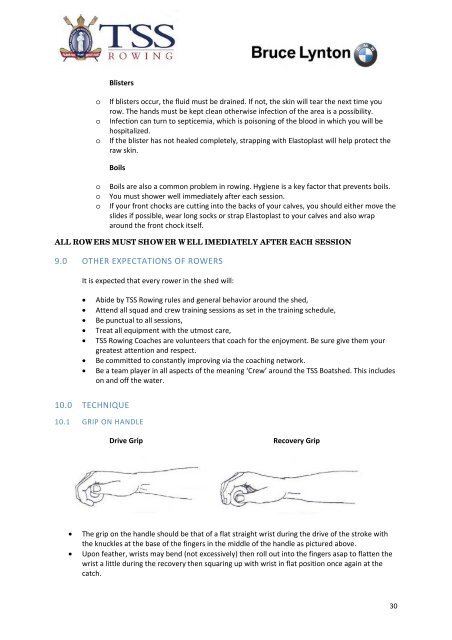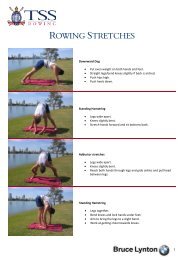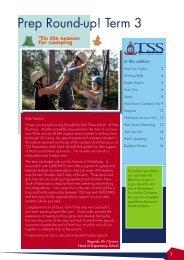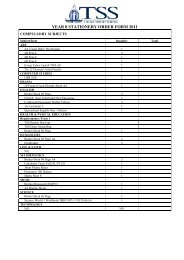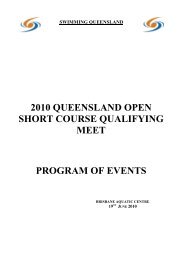2010 TSS ROWING HANDBOOK - The Southport School
2010 TSS ROWING HANDBOOK - The Southport School
2010 TSS ROWING HANDBOOK - The Southport School
Create successful ePaper yourself
Turn your PDF publications into a flip-book with our unique Google optimized e-Paper software.
Blisters<br />
o<br />
o<br />
o<br />
If blisters occur, the fluid must be drained. If not, the skin will tear the next time you<br />
row. <strong>The</strong> hands must be kept clean otherwise infection of the area is a possibility.<br />
Infection can turn to septicemia, which is poisoning of the blood in which you will be<br />
hospitalized.<br />
If the blister has not healed completely, strapping with Elastoplast will help protect the<br />
raw skin.<br />
Boils<br />
o<br />
o<br />
o<br />
Boils are also a common problem in rowing. Hygiene is a key factor that prevents boils.<br />
You must shower well immediately after each session.<br />
If your front chocks are cutting into the backs of your calves, you should either move the<br />
slides if possible, wear long socks or strap Elastoplast to your calves and also wrap<br />
around the front chock itself.<br />
ALL ROWERS MUST SHOWER WELL IMEDIATELY AFTER EACH SESSION<br />
9.0 OTHER EXPECTATIONS OF ROWERS<br />
It is expected that every rower in the shed will:<br />
<br />
<br />
<br />
<br />
<br />
<br />
<br />
Abide by <strong>TSS</strong> Rowing rules and general behavior around the shed,<br />
Attend all squad and crew training sessions as set in the training schedule,<br />
Be punctual to all sessions,<br />
Treat all equipment with the utmost care,<br />
<strong>TSS</strong> Rowing Coaches are volunteers that coach for the enjoyment. Be sure give them your<br />
greatest attention and respect.<br />
Be committed to constantly improving via the coaching network.<br />
Be a team player in all aspects of the meaning ‘Crew’ around the <strong>TSS</strong> Boatshed. This includes<br />
on and off the water.<br />
10.0 TECHNIQUE<br />
10.1 GRIP ON HANDLE<br />
Drive Grip<br />
Recovery Grip<br />
<br />
<br />
<strong>The</strong> grip on the handle should be that of a flat straight wrist during the drive of the stroke with<br />
the knuckles at the base of the fingers in the middle of the handle as pictured above.<br />
Upon feather, wrists may bend (not excessively) then roll out into the fingers asap to flatten the<br />
wrist a little during the recovery then squaring up with wrist in flat position once again at the<br />
catch.<br />
30


